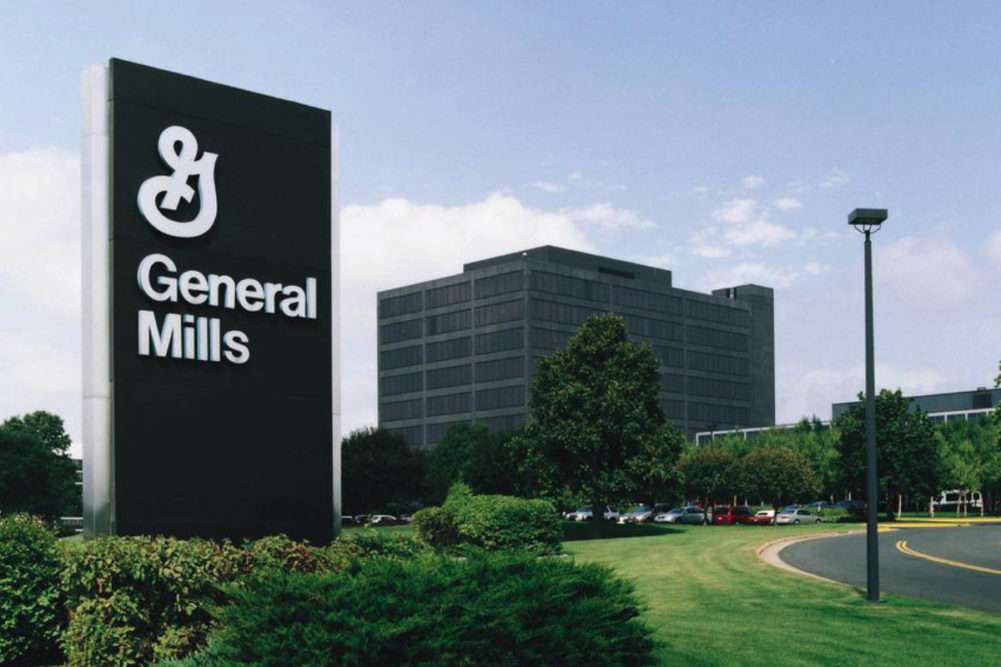MINNEAPOLIS — Executives of General Mills, Inc. expect rising input costs, a labor shortage and supply chain issues to last a while.
The company will address input costs by continuing to take pricing actions. Jonathon J. Nudi, group president of North America Retail, described the supply chain issues as almost “whack-a-mole.”
Amid the challenges, net earnings attributable to General Mills in the first quarter ended Aug. 29 were $627 million, or $1.03 per share on the common stock, which were down 2% from $639 million, or $1.04 per share, in the previous year’s first quarter, primarily reflecting lower operating profit. Net sales rose 4% to $4.54 billion from $4.36 billion in the previous year’s first quarter. Gross margin fell 120 basis points to 35.2% of net sales, primarily driven by higher input costs.
General Mills at the beginning of the year expected inflation of 7%, said Jeffrey L. Harmening, chief executive officer, in a Sept. 22 earnings call.
“It's clearly going to be between 7% and 8% now as we go on the year,” he said.
General Mills began to raise its prices in the quarter, and more pricing will come in the second quarter, he said.
Retailers and General Mills have worked well together through the pricing actions, Mr. Nudi said.
“We've gotten the majority of our pricing accepted and more importantly, reflected in the market,” he said. “So that's a trick as well. So we’re really working well with retailers, and we’ll continue to take the inflation and deal with it as we move throughout the year.”
Labor challenges could continue, Mr. Harmening said.
“So there's a shortage of truck drivers here in the US, and that's not going to abate for a while,” he said. “There is a shortage in shipping containers as we look at global transportation. You can see them on pictures in the LA port. So that's not going to go away for a while.”
A decrease in government spending, particularly on stimulus checks to the unemployed, has loosened the labor markets some, but it will not solve the entire issue, he said.
“So I would suggest that the challenges we have with labor and labor inflation are going to persist for quite some time,” Mr. Harmening said. “We have not really seen them abate significantly at this point.”
Raw material vendors, internal manufacturing, co-packer manufacturing and its own distribution network all are impacting General Mills’ service levels, Mr. Nudi said.
“It's almost whack-a-mole right now,” he said. “So we have literally hundreds of disruptions in our supply chains, and it really changes on a daily and weekly basis.”
Meetings at the senior level occur daily or weekly to solve the issues, he said.
General Mills reaffirmed its fiscal year outlook with organic net sales expected to be toward the higher end of the initial guidance range of down 1% to 3%.
In North America Retail, net sales in the first quarter slipped 3% to $2.64 billion. Net sales were down 7% in US Meals and Baking and 6% in US Cereal. Net sales were up 3% in US Snacks. US Yogurt net sales matched year-ago levels. Organic net sales also dropped 3% in the first quarter for North America Retail, but when compared to the pre-pandemic first quarter of 2020, organic net sales were up 5%.
In Convenience Stores and Foodservice net sales in the first quarter rose 23% to $482 million. Sequential recovery came in the away-from-home food channels of schools, restaurants, lodging and convenience stores. On a two-year compound growth basis, first-quarter organic net sales were up 4% when compared to the first quarter of 2020.
In the Pet segment, first-quarter sales jumped 25% to $488 million, driven by strong volume growth and favorable net price realization and mix. The acquisition of the Tyson Foods’ pet treats business, which closed on July 6, contributed five points of net sales growth.






